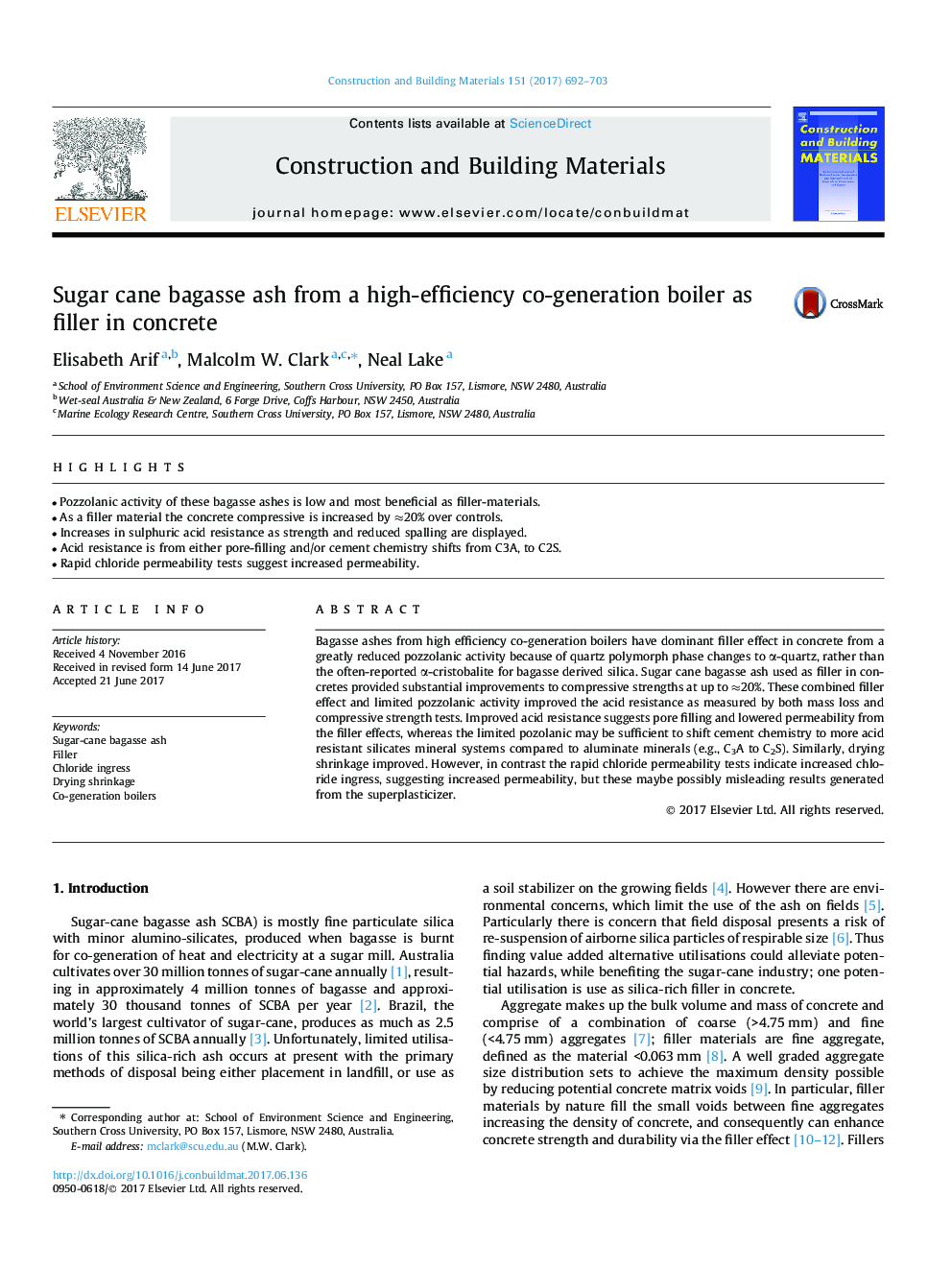| Article ID | Journal | Published Year | Pages | File Type |
|---|---|---|---|---|
| 4918223 | Construction and Building Materials | 2017 | 12 Pages |
Abstract
Bagasse ashes from high efficiency co-generation boilers have dominant filler effect in concrete from a greatly reduced pozzolanic activity because of quartz polymorph phase changes to α-quartz, rather than the often-reported α-cristobalite for bagasse derived silica. Sugar cane bagasse ash used as filler in concretes provided substantial improvements to compressive strengths at up to â20%. These combined filler effect and limited pozzolanic activity improved the acid resistance as measured by both mass loss and compressive strength tests. Improved acid resistance suggests pore filling and lowered permeability from the filler effects, whereas the limited pozolanic may be sufficient to shift cement chemistry to more acid resistant silicates mineral systems compared to aluminate minerals (e.g., C3A to C2S). Similarly, drying shrinkage improved. However, in contrast the rapid chloride permeability tests indicate increased chloride ingress, suggesting increased permeability, but these maybe possibly misleading results generated from the superplasticizer.
Related Topics
Physical Sciences and Engineering
Engineering
Civil and Structural Engineering
Authors
Elisabeth Arif, Malcolm W. Clark, Neal Lake,
